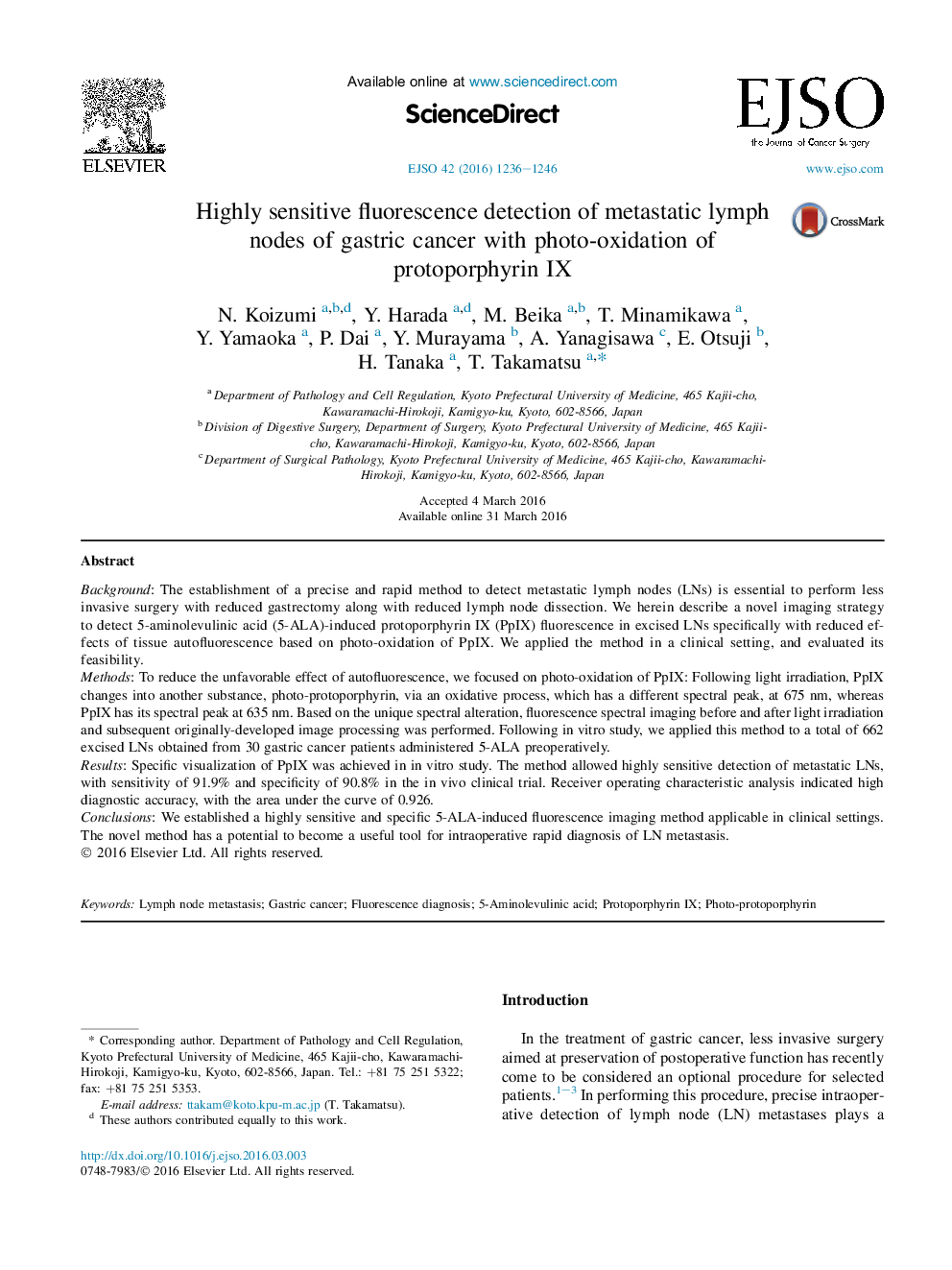| Article ID | Journal | Published Year | Pages | File Type |
|---|---|---|---|---|
| 3984421 | European Journal of Surgical Oncology (EJSO) | 2016 | 11 Pages |
BackgroundThe establishment of a precise and rapid method to detect metastatic lymph nodes (LNs) is essential to perform less invasive surgery with reduced gastrectomy along with reduced lymph node dissection. We herein describe a novel imaging strategy to detect 5-aminolevulinic acid (5-ALA)-induced protoporphyrin IX (PpIX) fluorescence in excised LNs specifically with reduced effects of tissue autofluorescence based on photo-oxidation of PpIX. We applied the method in a clinical setting, and evaluated its feasibility.MethodsTo reduce the unfavorable effect of autofluorescence, we focused on photo-oxidation of PpIX: Following light irradiation, PpIX changes into another substance, photo-protoporphyrin, via an oxidative process, which has a different spectral peak, at 675 nm, whereas PpIX has its spectral peak at 635 nm. Based on the unique spectral alteration, fluorescence spectral imaging before and after light irradiation and subsequent originally-developed image processing was performed. Following in vitro study, we applied this method to a total of 662 excised LNs obtained from 30 gastric cancer patients administered 5-ALA preoperatively.ResultsSpecific visualization of PpIX was achieved in in vitro study. The method allowed highly sensitive detection of metastatic LNs, with sensitivity of 91.9% and specificity of 90.8% in the in vivo clinical trial. Receiver operating characteristic analysis indicated high diagnostic accuracy, with the area under the curve of 0.926.ConclusionsWe established a highly sensitive and specific 5-ALA-induced fluorescence imaging method applicable in clinical settings. The novel method has a potential to become a useful tool for intraoperative rapid diagnosis of LN metastasis.
